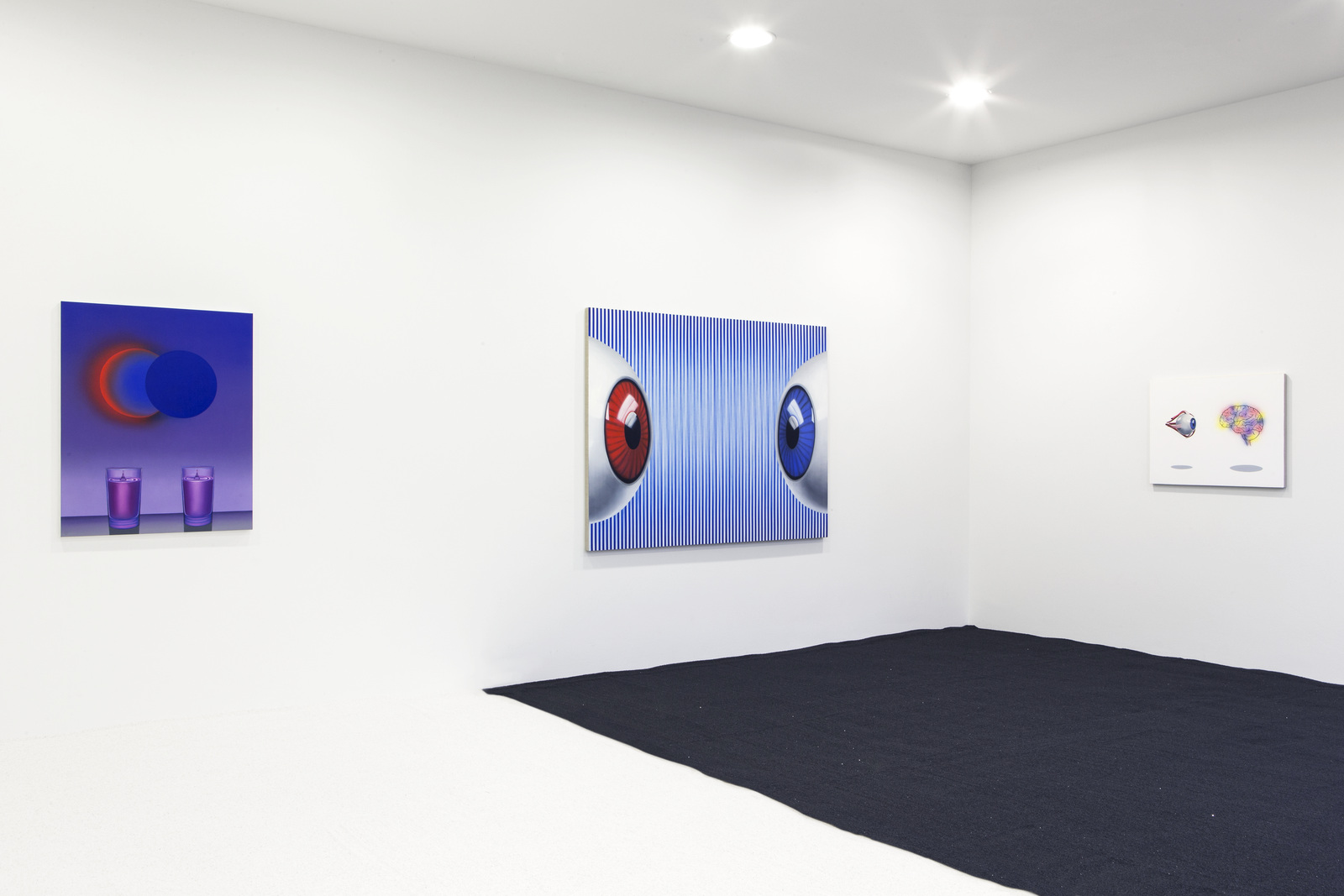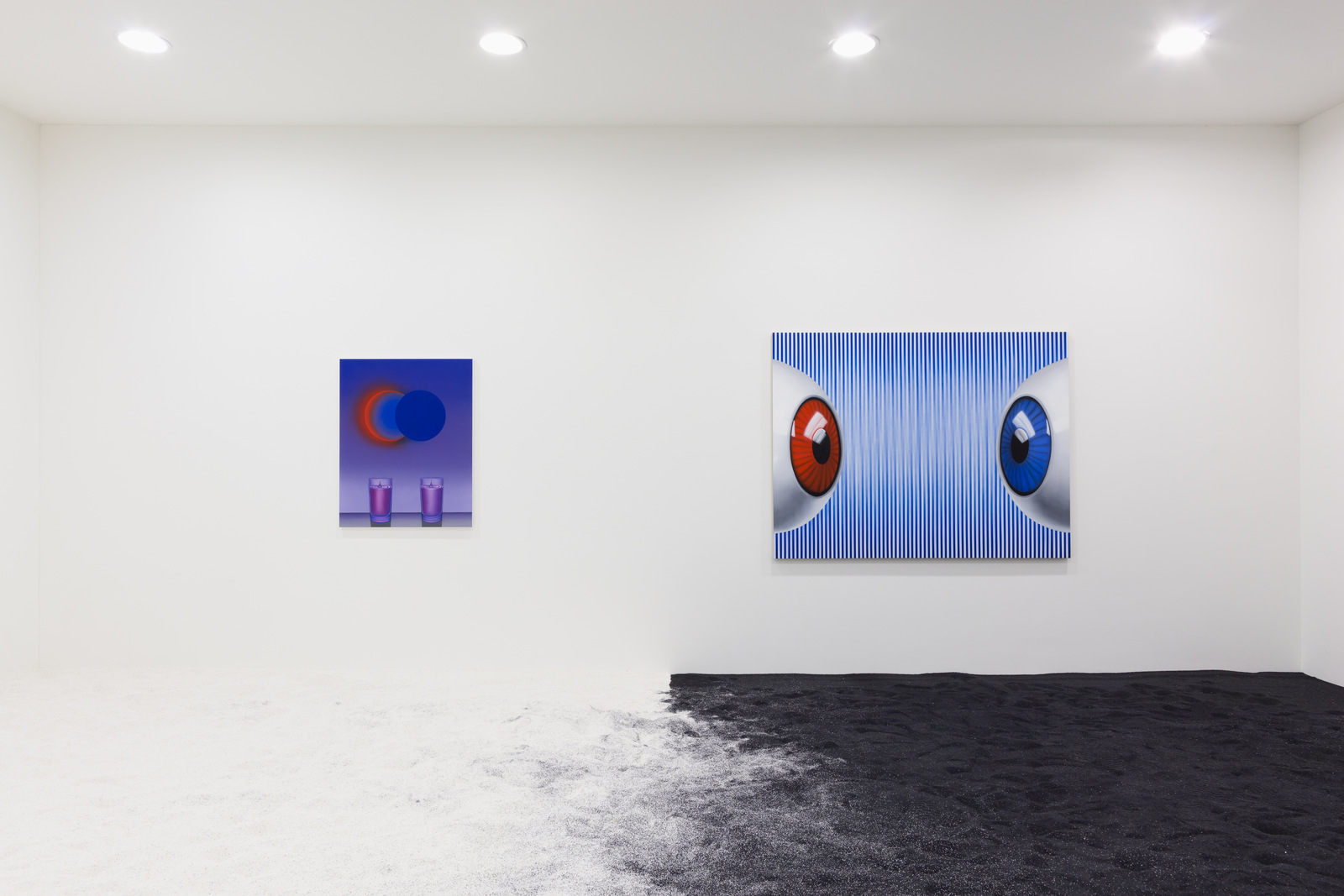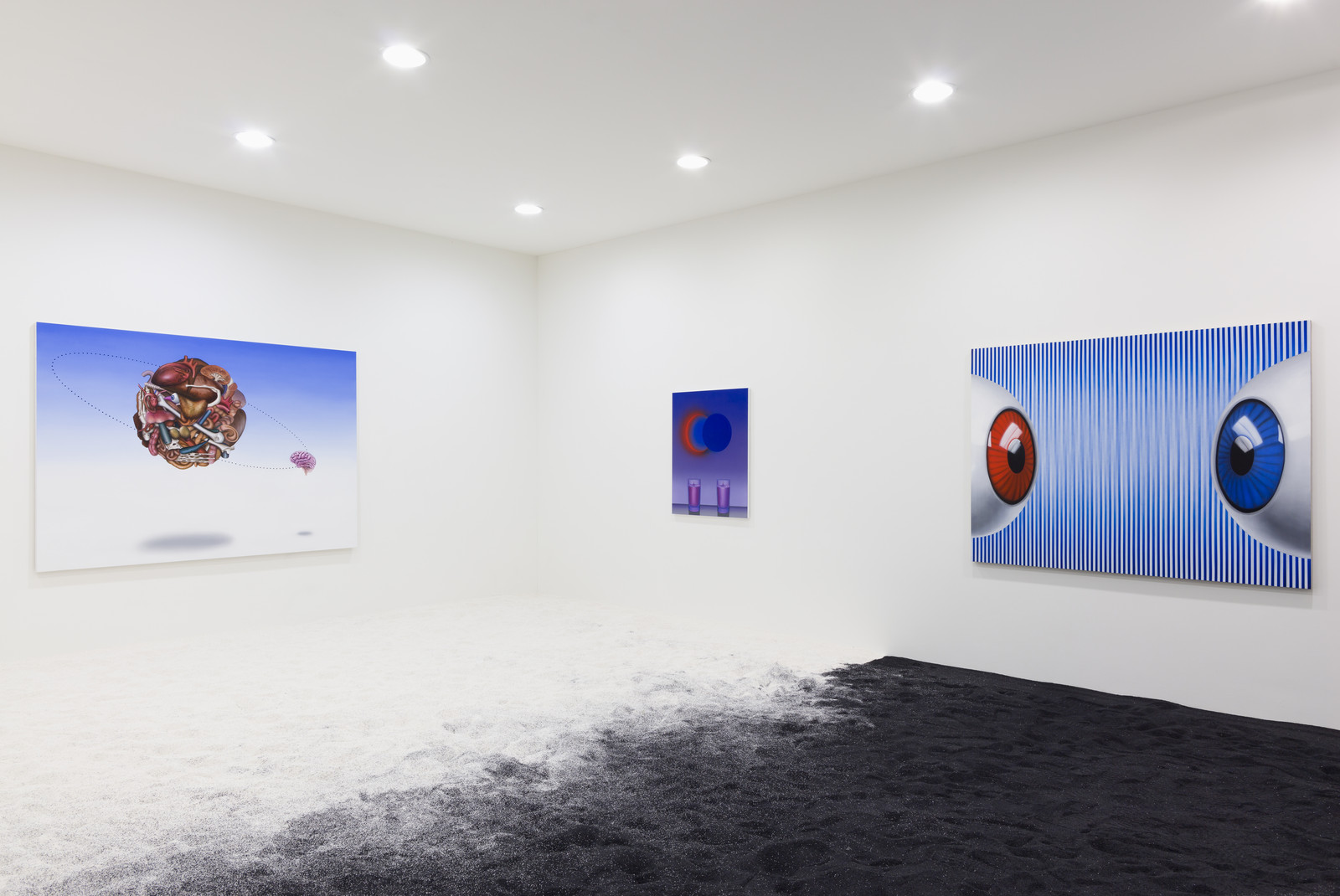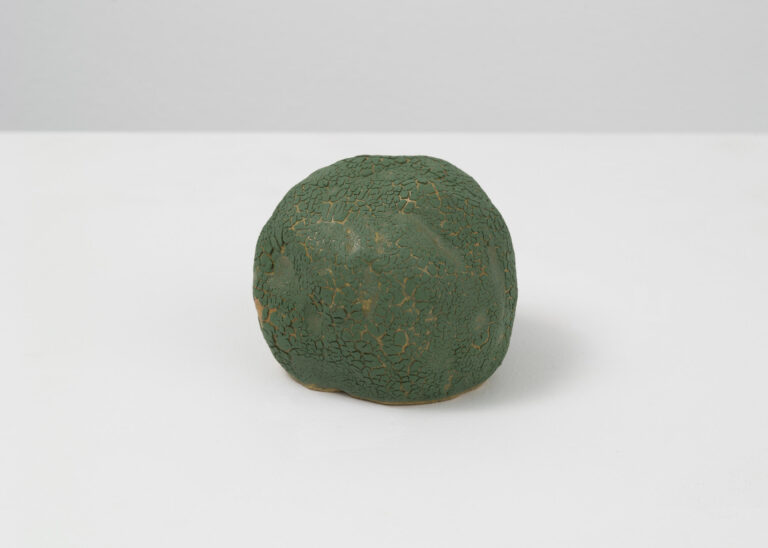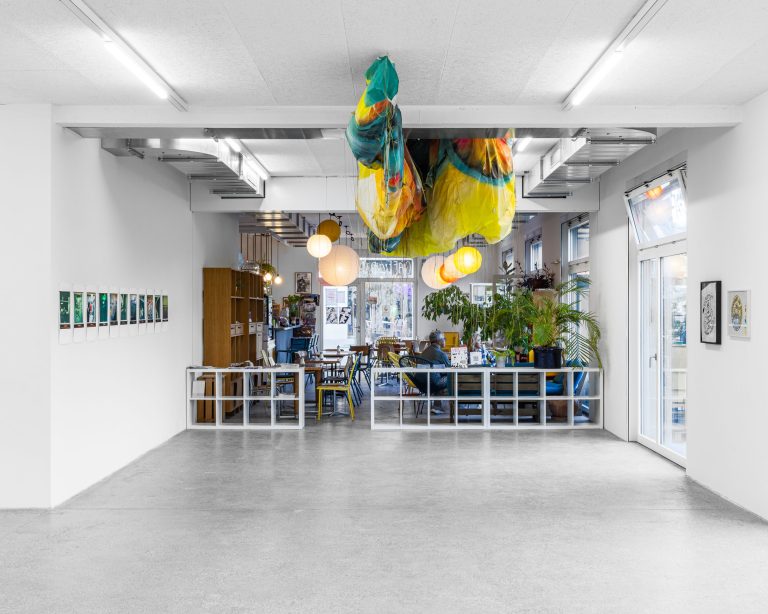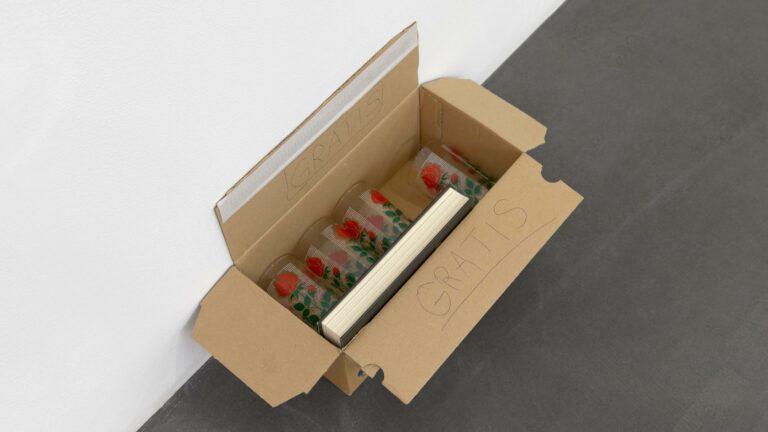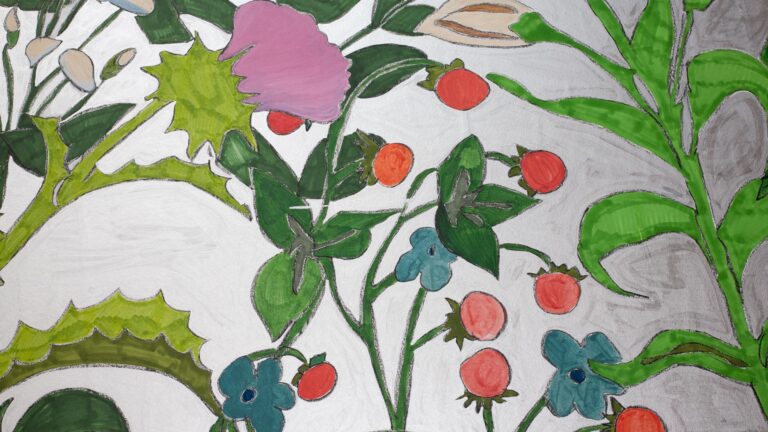Artists: Emily Mae Smith and Adam Henry
Exhibition title: The Little Apocrypha
Curated by: Samuel Leuenberger and Elise Lammer
Venue: SALTS, Birsfelden, Switzerland
Date: April 23 – May 27, 2017
Photography: Gunnar Meier, all images copyright and courtesy of the artists and SALTS
“We take off into the cosmos, ready for anything: for solitude, for hardship, for exhaustion, death. Modesty forbids us to say so, but there are times when we think pretty well of ourselves. And yet, if we examine it more closely, our enthusiasm turns out to be all sham. We don’t want to conquer the cosmos, we simply want to extend the boundaries of Earth to the frontiers of the cosmos. For us such and such a planet is as arid as the Sahara, another as frozen as the North Pole, yet another as lush as the Amazon basin. We are humanitarian and chivalrous; we don’t want to enslave other races, we simply want to bequeath them our values and take over their heritage in exchange. We think of ourselves as the Knights of the Holy Contact. This is another lie. We are only seeking Man. We have no need of other worlds. We need mirrors.”
For their first exhibition in Switzerland, which also marks their first official collaboration, Brooklyn-based artists Emily Mae Smith and Adam Henry produced a new body of work inspired by the fictional “brain planet” imagined in Stanislaw Lem’s book Solaris (1961). Transforming the exhibition space into an entropic alien terrain, the duo contemplates through a new series of paintings, the relationship between anatomy and consciousness.
Acknowledging that every change in science comes from pseudo science or is fuelled by a spiritual belief, the duo reflects on the concept of the apocrypha as a catalyst to question authorship and authority in our construction of knowledge. Deciding to operate a total collaboration, the artists attempted to break the notion of the artist as original genius, and undermine the gender bias that are so often connected to the medium of painting. By merging their practices and blurring singular authorship, rather than summing up two defined styles of work, Smith and Henry propose to create a third entity, one that is freed of style and gender. The artists compare their process to a “Tartini Tone”, a phenomenon happening when two tones are played simultaneously, creating a third new tone,
which contains both originals yet has a distinct vibration. While Smith is known for her hyperreal figurative vocabulary and Henry for his abstract colour investigations, with this project the artists seek to collapse style and break categorisation in painting.
Formally, the motives stem from Lem’s book and the artists’ mutual interest around language and perception. Solaris is a classic work of science fiction by Polish novelist and satirist Stanislaw Lem, which shows a deep commitment to scientific accuracy and is filled with existential considerations. It speaks of the attempt of a community of scientists to study and communicate with Solaris, a planet almost entirely covered with water. When stimulated, Solaris responds with an alien wave, by means of a fluid surface creating shapes and swells that the scientists fail to decipher, unable to move beyond their anthropocentric understanding of the universe.
The artists take inspiration from the planet, as an allegory to describe the mental concept of painting and its essence; a highly unstable and open-ended process, that is fundamentally a medium of communication, regardless of its formal appearance.
The floor of the exhibition space is split into two, clearly defined areas of black and white sand. A final allusion to Solaris, this floor treatment is also a reference to Robert Smithson’s appropriated definition of entropy, according to which art is submitted to an irreversible process geared towards equilibrium. Through a subtle act of withdrawal, Smith and Henry invite the audience to freely wander in the space, allowing their exhibition to reach its final state of balance during the mixing of sands.
Working primarily with oil paint on linen, Emily Mae Smith’s work (*1979 Austin, lives and works in Brooklyn) consists of fantasy-fuelled imagery, whose formal vocabulary borrows aspects from Hyper Realism, Pop Art and Surrealism. Inspired by design and illustration histories, Smith’s innocent and colourful unreal bodies often allow the artist to explore feminist theories about corporeality. Recent exhibitions include include König Galerie (Berlin); Marlborough Chelsea (New York); and “Unrealism” organized by Jeffrey Deitch and Larry Gagosian in Miami. In 2016, Smith had solo exhibitions at Mary Mary (Glasgow) and Rodolphe Janssen (Brussels). She is currently working on a solo exhibition that will take place at Simone Subal Gallery (New York) in fall 2017.
Adam Henry’s works (*1974 Pueblo, lives and works in Brooklyn), typically made from brushed and sprayed polymers on linen are often simultaneously indefinite and precise; color occupies rigidly spaced planes on the canvas but then blooms, fading into white or dispersing into a gradient. In reference to Modernist concrete painting, his geometric compositions have a strong mystical component, whereby the medium serves the artist to transcend the logical. Recent exhibitions include Steve Turner (Los Angeles); Lucien Terras (New York); and Villa Merkel (Germany). Recent solo exhibitions were held at 247365 (New York) and Meessen DeClercq (Brussels). Henry has a forthcoming solo exhibition at Lundgren Gallery (Palma, Spain).




